The world of sustainability is dipped, breaded, and fried in misconceptions. Every aisle we walk down at our local grocery store has words like “organic,” “eco-friendly,” and “better for the environment,” listed all over them in beautiful hues of blues and greens.
But what does sustainability really mean? What does it mean to me or us as a society? We’re beginning to understand that the processes we have used for oh-so-long are not the best of the best, and it is time for a revolution. It may come as a surprise, but according to Alternatives Journal’s article, “How the Fashion Industry is Picking up the Threads After Rana Plaza,” the fashion industry has the highest use and pollution of freshwater. It takes about 2,700 liters of water to make one cotton t-shirt and 17-20% of industrial water pollution comes from textile dyeing and treatment. That’s a lot of water.
To help debunk some of the myths, here are the five most common misconceptions of sustainability when it comes to the fashion industry or slow fashion:
Misconception 1: Why worry about fashion? It doesn’t affect the environment.
Actually, it does. It affects more than the environment; it affects the air you breathe, the water you drink, and the food you eat. The clothes you wear can even be immersed in chemicals and dyes that seep into your fragile skin.
The fashion industry is the second largest pollutant in the world, right behind the oil and gas industry. If you think about the processes used to create a garment piece, it is pretty simple. Fabric is created from fibers, which are grown in the earth. The earth has been impacted by humans’ use of pesticides and GMOs for faster and more efficient production of these fibers.
Those pesticides and GMOs are then washed into our lakes, rivers, and absorbed into our soil. This water is then consumed by us, wildlife, and vegetation. We then eat and drink the end-result of this process. Not only are we consuming potentially harmful substances internally, we are consuming them externally. The Huffington Post stated that it takes “almost a 1/3 pound of synthetic fertilizers to grow one pound of raw cotton; and it takes just under one pound of raw cotton to make one t-shirt.” When converting cotton into clothing, many hazardous materials are used to create the products; materials like heavy metals, flame retardants, ammonia, phthalates and formaldehyde, just to name a few. These harmful chemicals get into the fabrics we put next to our skin every day.
Another unsettling point is that many times these clothes are then manufactured in countries that are receiving barely enough pay and supervision to keep afloat. They don’t have time for pesticides. They are working to create a product quick enough so that the wildly anxious consumer can enjoy it at the time requested. But, at what cost?
It takes about 2,700 liters of water to make one cotton t-shirt and 17-20% of industrial water pollution comes from textile dyeing and treatment. That’s a lot of water.
Misconception 2: It’s too hard to find sustainable brands.
We live in a world saturated with social media, the internet, and non-stop chatter on up-and-coming innovations. I believe that if there is a push and desire to find good brands, then there is a way.
If you are on the hunt for sustainable brands, then look no further than your Google search bar. Searching the simple terms “sustainable fashion brands,” feeds you a list of articles and blogs on brands locally and abroad that can provide you with all you need to live a life of green power. The results bring up powerhouses like Refinery29, The Good Trade, and Marie Claire sharing their countdowns on amazing sustainable brands where you can get your fashion fix. There is even a directory provided by Eco Fashion World. Just search it, it’s simple as that; if not for you, then for your kids and their kids and their kids.
Misconception 3: Sustainable brands are too expensive and not feasible for every day.
Many of us are familiar with, or maybe even known, for splurge purchases. It doesn’t matter the cost or the necessity, if it is reasonably discounted then we must get it, and we must be the first. Price does not seem a deterring factor when it comes to quality.
Think about the last time you considered not buying added-hormone milk. Did you even think twice about it? Probably, not. It just came as instinct that that hormone milk is a no-no. It’s the same thing with sustainable brands and products, it’s all in the quality and longevity of the product; no added hormones, please.
Plus, it is important to see a product’s full lifecycle from the human capital it took to produce it to the time you donate it. Here are a few brands that can make you a little more greener in your everyday life: Thrive Market is perfect for all your daily grocery store needs. They have everything from a cure for your cold to a new toy for your dog. And if you want something a little more local, try your local farmer’s market or organic section of your local grocery store. If there is a vision, there is a way. For a fashion fix, check out brands like People Tree, Everlane, Zady, and Patagonia, to name a few. These brands are as affordable as that $55 blouse from a big box store, but have a little more care for the lifecycle of your garments.
Another great option is to consider vintage, second-hand, or consignment options, which are other methods sustainable fashion favors and reduce waste.
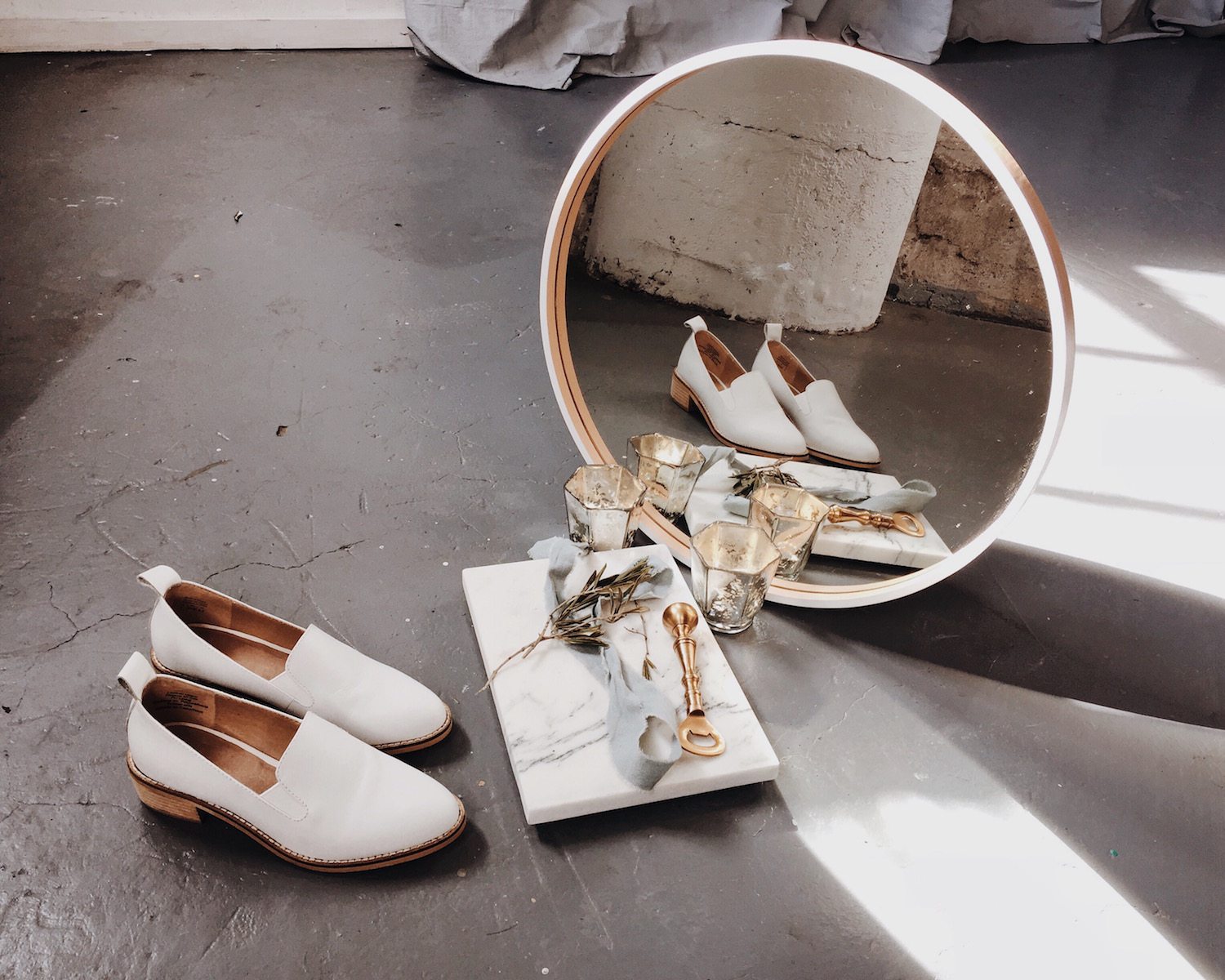
Misconception 4: I can’t impact the deeply saturated fashion industry.
“Fashion can be a universal player in protecting the planet,” Pharrell Williams told National Geographic.
One person is all it takes. One place is all it takes. The horrific building collapse in Rana Plaza sparked such a media frenzy of something that had been building for years. It just took one Jenga piece to demolish the whole infrastructure, or at least bring light to it and begin the process of building a revolution.
The power in this life-size Jenga is with people, the consumers. If the consumers demand it, then changes within the fashion industry will come to exist. Just take a second to think about all those other things that consumers have had the power to change in just the past decade: storefronts are no longer a necessity in a market where web presence is stronger, mobile devices are drivers for foot traffic or else everything else can be done “on the web,” online reviews carry more weight than ever for brands, and products can literally jump off the screen due to the amount of real-life graphics available to an online consumer.
Though it is a slow process, retailers and consumers alike are part of positively evolving the industry. According to Nicole Peyraud in a Yogi Times article, “Showing enthusiasm for…sustainable choices, consumers are putting rumors of an eco-fad to rest, actively making deep-rooted change one environmentally friendly purchase at a time.” It really does lie in the power of the people.
Though it is a slow process, retailers and consumers alike are part of positively evolving the industry.
Misconception 5: Eco-friendly fashion doesn’t look cool or isn’t really my style.
Let me guess, when you visualize sustainable fashion you are probably envisioning a granola-eating, vegan hippie who loves yoga. This is totally the opposite of the world of sustainable fashion. The brands that exist are numerous with products for everyone, from your daughter to your grandmother, and for every style, from casual, luxury to even retro.
Brands like Reformation, Zady, People Tree, Everlane, Patagonia, GAIA for women, Krochet Kids, Fair Trade Winds, Mata Traders, MadeFAIR, PACT Apparel, Nisolo, Shift To Nature, milo+nicki, Mayamiko, Alternative Apparel, Apolis, Vetta Capsule, Naja, Industry of All Nations, Slumlove Sweater Company, Elegantees, Noctu, Symbology, Brain Tree Clothing, Fibre Athletics, My Sister, Sseko Designs, Sotela, prAna, Wallis Evera, Purple Impression, The Root Collective, Thread Harvest, Raven + Lily, Eileen Fisher, Gather & See, Oliberete, Good Cloth, and many many many more are making it easy to buy gorgeous, one-of-a-kind pieces for all types of consumers. You can buy everything from your blouse to your lingerie! It really is a matter of purchase power. Do your part.
Come on, it’s for our planet and the people who live on it.
Images via Maddie Greer

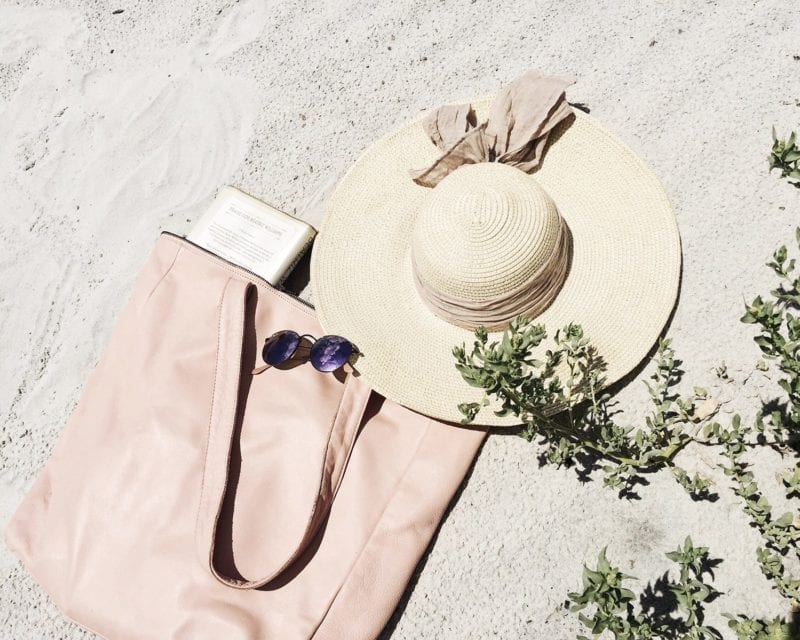
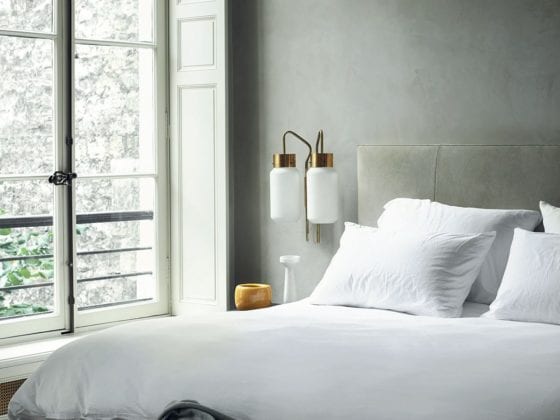
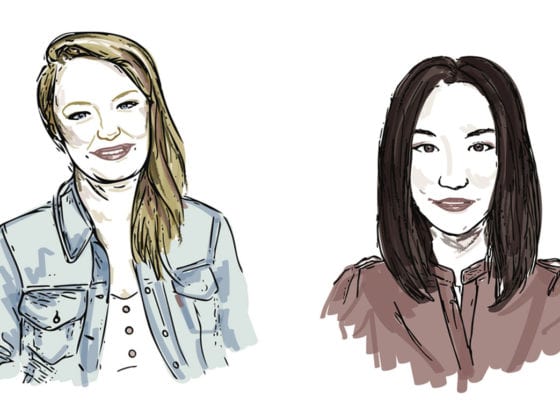
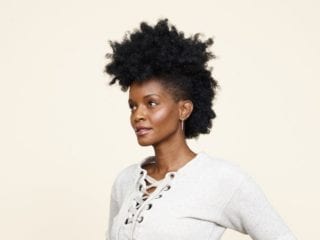
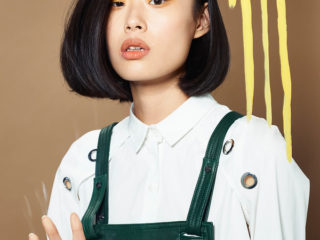
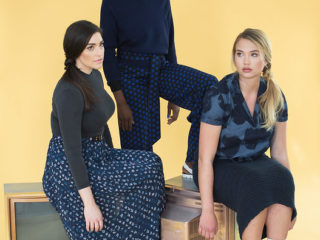


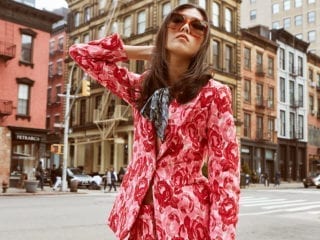


30 comments
Excellent article with many good points; however, for many people a $55 blouse still isn’t financially feasible (especially since you need not one, but several to stay outfitted throughout the week!). Threads for Thought used to be more in reach, however they have increased their prices dramatically. I think cost is still a barrier to more people shopping sustainably.
love this article. it’s unpopular but candice swanepoel the victoria’s secret angel actually been working with some sustainable fashion brands from jeans, to vegan leather sandals, and now she got her own swimsuit (name: tropic of c) eco certified and fair trade too. i’m just teenager, and from candice’s work i start to be more interested in sustainable fashion thing. and i found your article too. wonderful
Thank you so so much Mariana for your kind words. I am so happy to hear you are interested in sustainable fashion! One step closer to making a huge impact on our planet and the industry.
Hello Nicki!
Thank you for your easy and direct post that I can share with my friends.
I have a question, wondering if you could share some insights:
Many of the public scrutiny of unsustainable practises in the apparel industry comes from the West, targeting big American and European brands, however, since there are also many fashion labels in other parts of the world, for example in the emerging markets, that I suspect also contribute to the problem. Would you have be able to shine some light on identifying these big brands from less developed markets?
Thank you so much! 🙂
Best of luck with everything and I am definitely a supporter!!!
Best,
Teresa
Hi Teresa,
Thank you so much! I am so glad the piece was helpful. 🙂
If I am understanding your question correctly, I would say no matter the size or location of the brand or company, if the brand or company is using sustainable and ethical practices, they will be more than willing to share that with you. In turn, I would recommend reaching out to the brands and companies you are wanting to learn more about, and ask them questions. Through the timeliness and quality of their reply, you will be able to identify those brands and companies that truly believe and have a sustainable and ethical business model.
Please let me know if you have any other questions. I am more than happy to help in anyway I can!
Thank you so much for your support!
xoxo
Nicki
Hi beauty! Thank you so much for your comment and I completely understand where you are coming from. There is actually an amazing app called Good On You, it just launched recently in the US, that brings you a list of all ethical and sustainable brands straight to your phone for free, and they defintely share brands that carry sizes 10, 12, 14, and 16! I would highly recommend downloading and checking out the app. 🙂 I hope this helps! xoxo
Thanks for bringing this topic to your readers! I love seeing the sustainable fashion movement grow by the month!!! Id love to also add Trades of Hope to the list of amazing brands!! <3
http://www.mytradesofhope.com/shelbywright
Really well written article, Nicki! And thank you so much for mentioning Wallis Evera in your list of brands that are out there making it easy shop for sustainable fashion. It is an honour every day to be part of this amazing movement. 🙂
Thank you for mentioning second-hand. If I don’t sew my own clothes then I buy second-hand. There are so many choices available for the discerning eye, and this is one way I can make a sustainable wardrobe affordable. Admittedly, the reason this works so well for me is that I have the ability to modify a garment when necessary.
Nice.
Thank you so much Lilly! 🙂
I loved reading this article. I’m bookmarking because I think you’ve covered so many necessary points when it comes to sustainable fashion. Things I’ll come back to again and again whenever I’m tempted to settle for a fast-fashion piece. Plus, that list at the end is awesome. Thanks!
Thank you so much Marie Therese for your support and sweet words. I am so happy to hear that this will be an awesome resource for referring back to. 🙂
What a timely piece! So many misconceptions, but such a big difference we can make! Love that you mentioned thrive market! I bought a membership with them last year 🙂 and I LOVE the root collective! Another great company is STYLESAINT they make these amazing beechwood I Believe darling did a piece on them in one of their magazines! Thanks for the list!
Hannah Lacey, thank you so much for your sweet words! I totally agree that we can make a huge difference together. 🙂
Love this piece and I appreciate the list at the bottom. I can definitely see this movement going forward in the upcoming years. That said, I do think there is a lack of insight here regarding expense. The comparison to milk is really a bit ludicrous. Not the goal isn’t as worthy but let’s be frank, upping my price of milk by $2 a gallon really isn’t comparable – one can buy a dress at Target for $40 (that surprise, WILL last a few years) vs. an ethically produced organic cotton dress for minimum $150… let’s not even pretend to compare the two.
I think you’ve hit on a lot of great points here but for the average gal’s budget, I think a little more consideration or sympathy could be paid on this one particular point 😉
Thank you Amber so much for you support! I hope you enjoy shopping with some of the amazing designers and brands in this piece. Sorry for the confusion regarding the milk comparison. I was hoping to provide a comparison to how we don’t think twice about purchasing non-hormone added milk, and so that should easily translate into the world of sustainable fashion. I completely get the girl on a budget consideration and totally sympathize as I am a girl on a budget as well, but it is important to consider the cost of creating the garment such as who made it, where was it made, was it made ethically, were the employees paid fairly and provided safe working conditions; these are very important pieces that definitely add up to create the final cost of the product. Definitely noted though! 🙂
I totally agree with this, although I am having a really hard time finding plus size sustainable clothing that are comfortable and easy to wash (I’m a stay at home mom). Any ideas?
Alden at Ecocult has written about this and done a nice roundup in the past: https://ecocult.com/2016/sustainable-ethical-plus-sized-clothing/
Thank you so much Eliza! Besides the amazing brands such as Sotela and Purple Impressions, check out Synergy Organic Clothing, Smart Glamour, and Mewv Sustainable. Also, ROSEGOLD Clothiers is an amazing friend and brand that will be launching in 2017.
“The fashion industry is the second largest pollutant in the world, right behind the oil & gas industry” While we’re aware there’s a problem, it’s still so easy to forget just how huge an impact the brands behind our everyday clothes have, or the changes a few small choices as consumers can inspire.
Am loving H&M’s new return policy as well, advising customers to bring back the rags and worn out fabrics and clothing that we might usually deem to tattered for the charity shop donation bags. At least it’s an effort to get people into the mind set of recycling instead of just adding waste. Will definitely be checking out the above mentioned brands though!
xo
I completely agree Peach! It is very hard to remember, but I am hoping together we can shift that mindset and push people to be more aware and knowledgeable. So happy to hear that H&M has changed their return policy. That is definitely an awesome movement. 🙂